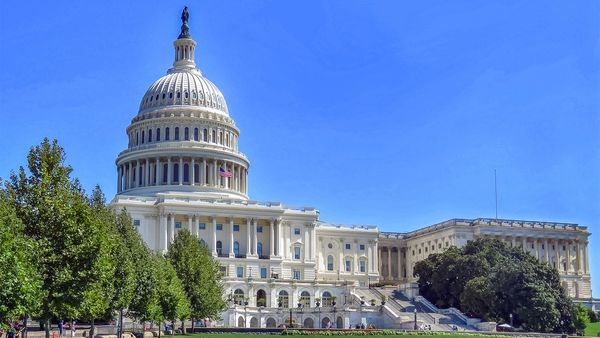
A desire for high-quality journalism has led roughly one in five Australians to pay for the news they read online, a global survey has found, as overall trust in news media increases slightly despite falling rates of consumption.
The latest Australian edition of the annual Digital News Report, published by the University of Canberra on Wednesday, found that 22% of the 2025 people surveyed have an active digital news subscription, up four percentage points from the previous year.
The rate is markedly higher than the average 16% who pay for news online in other developed news markets surveyed in the report, which found Norway is home to the most paying news subscribers of the 46 countries surveyed. Australia ranks third.
The cohort to report the biggest jump in Australia were those who pay for three or more news services, which jumped 15 percentage points to account for 34% of those surveyed.
The leading reason for stumping up for a subscription was to access “higher quality news” than what is available for free, which was cited by 44% of those who pay for news online. More than 35% said subscriptions are more convenient, and a third said they take subscriptions to help fund good journalism.
The report forms part of a long-running international survey overseen by the Reuters Institute for the Study of Journalism, based at Oxford University in the UK. The Australian component of the survey, now in its ninth iteration, was carried out through a YouGov questionnaire between January 10 and February 12.
Sora Park, a professor of communication at the University of Canberra and the Australian report’s lead author, said although publishers may welcome the subscriber bump, news consumers are worried they aren’t being given enough perspectives.
“Australians are willing to pay to access high-quality and trustworthy online news, but they are concerned about algorithms and editors choosing news to match their interests and fear they are missing out on information and a diversity in viewpoints,” Park said.
The most subscribed news service, according to the report, was The Australian. It was followed by Guardian Australia, The Daily Telegraph, and The Sydney Morning Herald.
Park said news subscriptions are “facing the heat” of a worsening cost-of-living crisis, which “many cite” as a key reason for moving to a cheaper plan or cancelling subscriptions. More than half of the respondents who already had an active digital news subscription said they’d changed their subscription in the past year, signifying a serious churn rate, and 26% said they’d cancelled one or more news subscriptions.
Although the overall subscriber bump may offer optimism to media executives in Australia, heavy news consumers are changing their habits. Those who identify as “heavy” news consumers dwindled by four percentage points compared with last year, and 7% say they rarely or never consume news.
Among the demographics to turn away from the news were women, whose interest in news has fallen to a record low of 43%, six percentage points lower than last year, and overall news consumption fell to just 53%.
“Australian women were noted among the lightest consumers of news globally,” Park said. “But they are not the only ones at risk of being left behind, as gen Z’s heavy news consumption also dropped by 10 percentage points.”
However, overall levels of trust in the news media crept up two percentage points to 43% in 2023, made up by an eight percentage point increase among men, despite falling levels of trust as well as interest among Australian women.
“Age and education were other factors where gaps in trust emerged — consumers with higher levels of education showed more trust in news, whereas the oldest and youngest generations’ trust levels declined,” the report said.
The most trusted news sources among Australian news consumers were the ABC and SBS; the report noted “strong support” for the public broadcasters among more than two-thirds of those surveyed, about the same as last year.
The least trusted news brand of the 15 publications put to survey respondents was News Corp’s Sydney tabloid The Daily Telegraph, with just 44%. Sky News scored the highest levels of “distrust” among survey respondents, accounting for 29% of responses.
Most of the news brands put to respondents saw a marginal increase in trust, while Guardian Australia and Nine News secured larger increases, at six and four percentage points respectively.
More than half went so far as to say “public service media”, defined by the survey as the public broadcasters, is important to them. Australians value their public broadcasters more highly than audiences in the UK and Canada, the report said.
“At a time when one of the world’s most powerful media companies, News Corp, has shown itself to have cared less about truth than knowingly continuing to broadcast lies to retain their audience, public service media remains of critical importance,” the report reads.
It found that those with higher levels of education and income, often left-leaning, were more likely to think the broadcasters are important to society, while gen Z was the least likely to see the broadcasters as important.
For news organisations, gen Z has been the trickiest cohort to form a relationship with, as heavy news consumption among the world’s youngest tumbled 10 percentage points over the past year.
One in four gen Z news consumers said they watched news-related videos on TikTok, where 17% of them get their news, up four percentage points from last year. Instagram still maintains a news stronghold for young people: 26% said they get their news from it, up six percentage points from last year.
Do you read and watch the news, or have you switched off? Let us know by writing to letters@crikey.com.au. Please include your full name to be considered for publication. We reserve the right to edit for length and clarity.







